This Family Safeguards a 700-YO Artform While Winning National Awards & Earning Lakhs
From water scarcity, forests to coronavirus, the Joshi family from Bhilwara, Rajasthan, give a contemporary spin to Phad paintings that originated centuries ago.
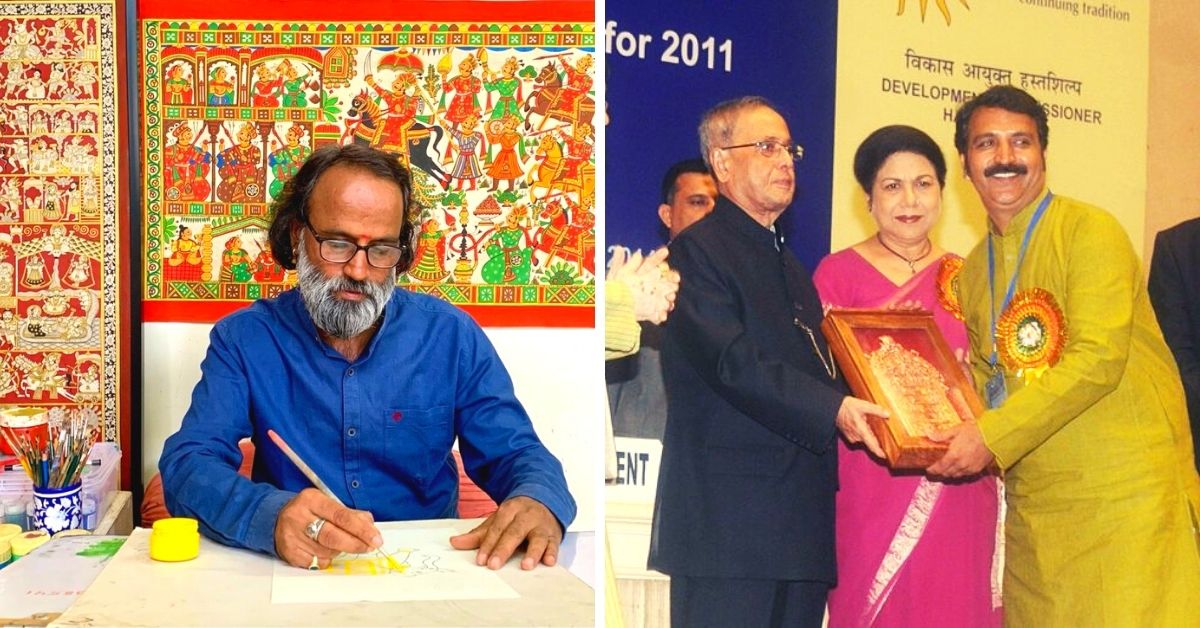
At first it looks like a cramped but colourful board game with stages to cross. Upon zooming in you see flags of different countries that give you the impression of diverse cultures celebrated across the world.
It is only after observing two scenes on the top left of the image that you realise it is actually a depiction of the journey of the coronavirus, which began in Wuhan. The chronological painting continues with Italy, France and Britain. The fourth scene depicts how the virus spread from one country to another.
It finally enters India with scenes of urgent check ups, handwashing, Prime Minister’s address on a nationwide lockdown, which resulted in work from home and closure of businesses. The rest of the scenes show people banging plates in balconies, feeding street animals, donating money, etc.
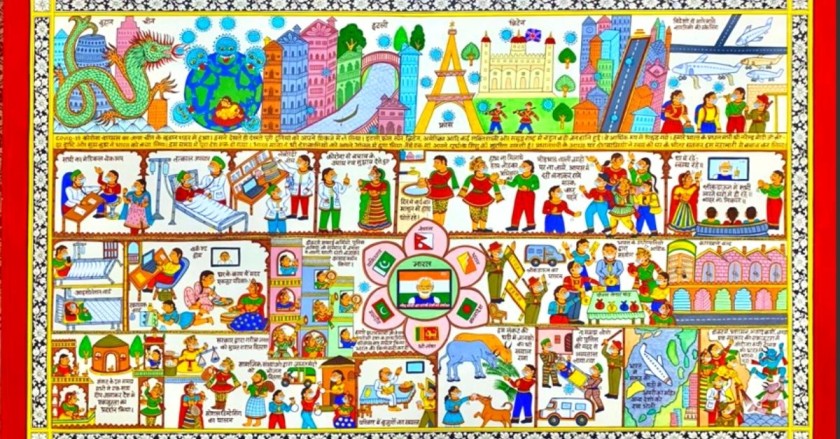
The visual documentation of what India and the world has gone through in 2020 was done using a 14th century art form called ‘Phad painting’, which originated in Rajasthan.
National award winning artist Kalyan Joshi is the man behind the painting that was sold to the British Museum for Rs 2,50,000.
The 30th generation artist is keeping alive his ancestor’s fabled heritage by infusing it with contemporary themes. His late father, Lal Joshi and brother, Gopal are Padma Shri recipients.
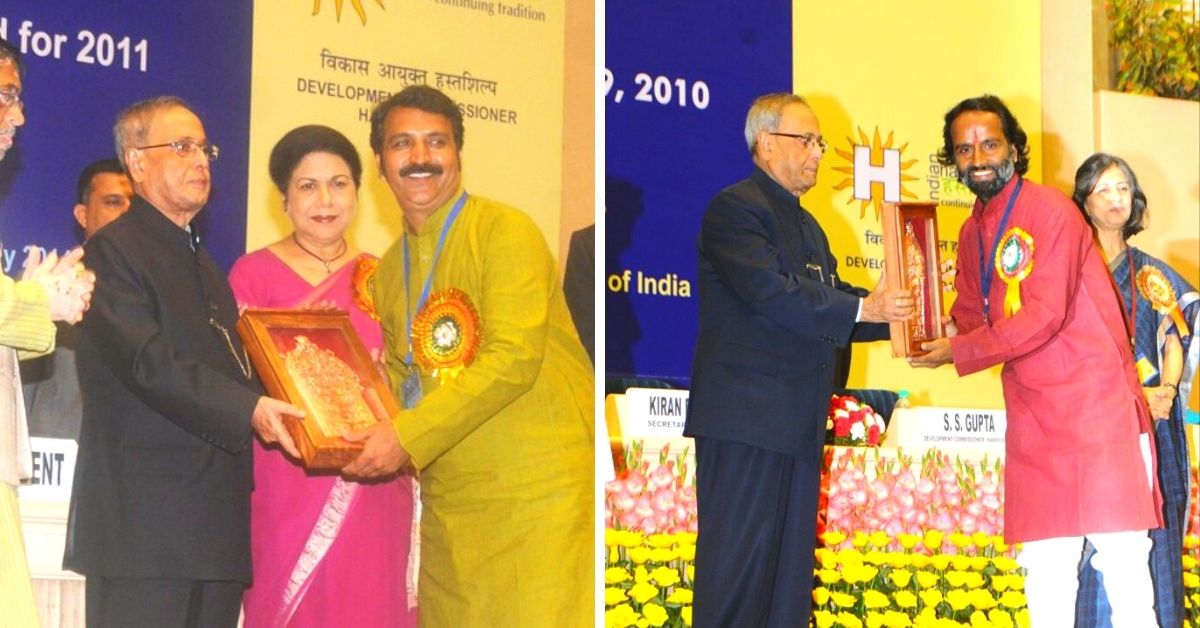
Once used as a medium of entertainment before the influx of television and radio, Phad is now being used to spread important social messages with COVID-19 being the latest example.
The paintings, that are as tall as 30 feet, are also known as ‘travelling temples’ as artists depict stories of deities on them.
What Are Phad Paintings?

Originating 700 years ago in Bhilwara region, the Phad or ‘fold’ paintings depict tales of folk deities like Devnarayan and Pabuji in the beginning. The storytellers, called Bhopa and Bhopi, travel from one village to another with the scroll painting. The husband (Bhopa) plays the instrument Ravanahatha, while his wife (Bhopi) dances and sings the tales.
“It is an overnight event and all villagers assemble at the chaupal (centre of the village). Painters take a month to fill in all the scenes using natural colours. Besides entertaining people, the narrators occasionally carry out rituals,” says Kalyan.

Over the years, the artists adapted to changing times and modified existing tales or added new ones like scenes from mythological tales, wedding ceremonies, changing climates, forest systems, voting, etc.
One of their most interesting projects taken up by Kalyan was depicting the water scarcity crisis in Shekhawati region of Rajasthan. Set against the desert landscape, the village ponds and wells dried due to unchecked groundwater extraction. This forced people to migrate. The painting was concluded with scenes of rainwater harvesting that recharged groundwater and mitigated the water crisis.

Each painting is painstakingly done with utmost focus and precision. All the faces are drawn with a side profile as characters are shown interacting with each other.
The biggest challenge is composing the scenes with equal weightage and area. Artists then divide the scroll into four parts and a couple of scenes are allocated to each one.
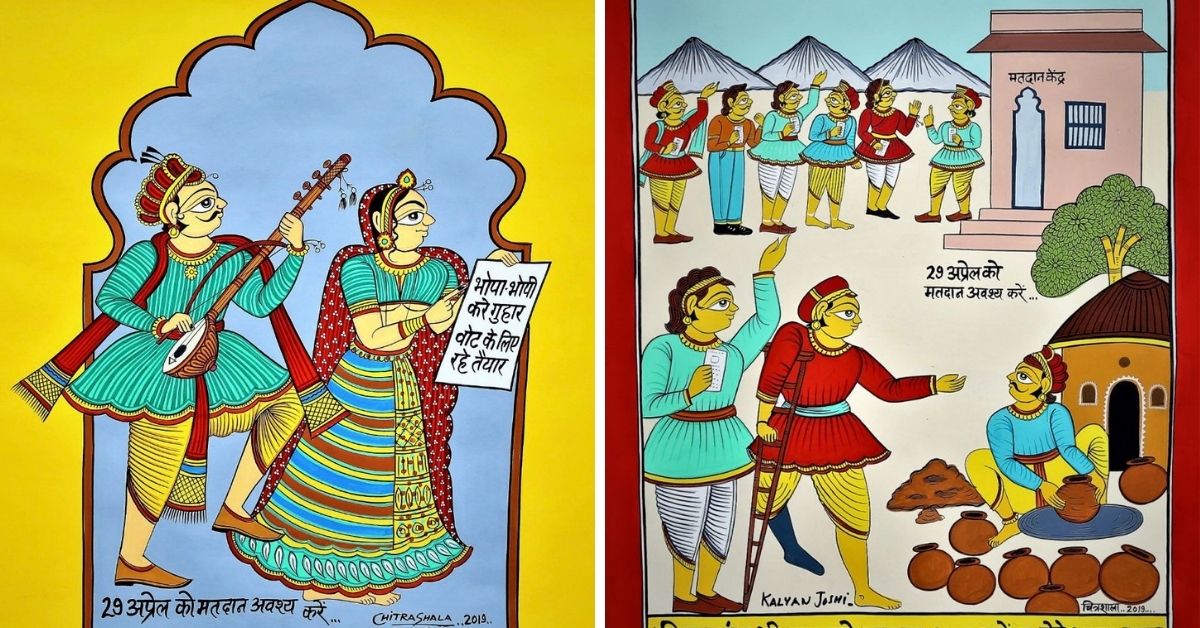
The handwoven cloth is first soaked in water overnight and then sundried. To make threads more durable, the cloth is dipped in cornstarch (maida). In the final stages, they use Mohra (a stone) to smoothen the cloth and apply gond (glue) to make the surface smooth.
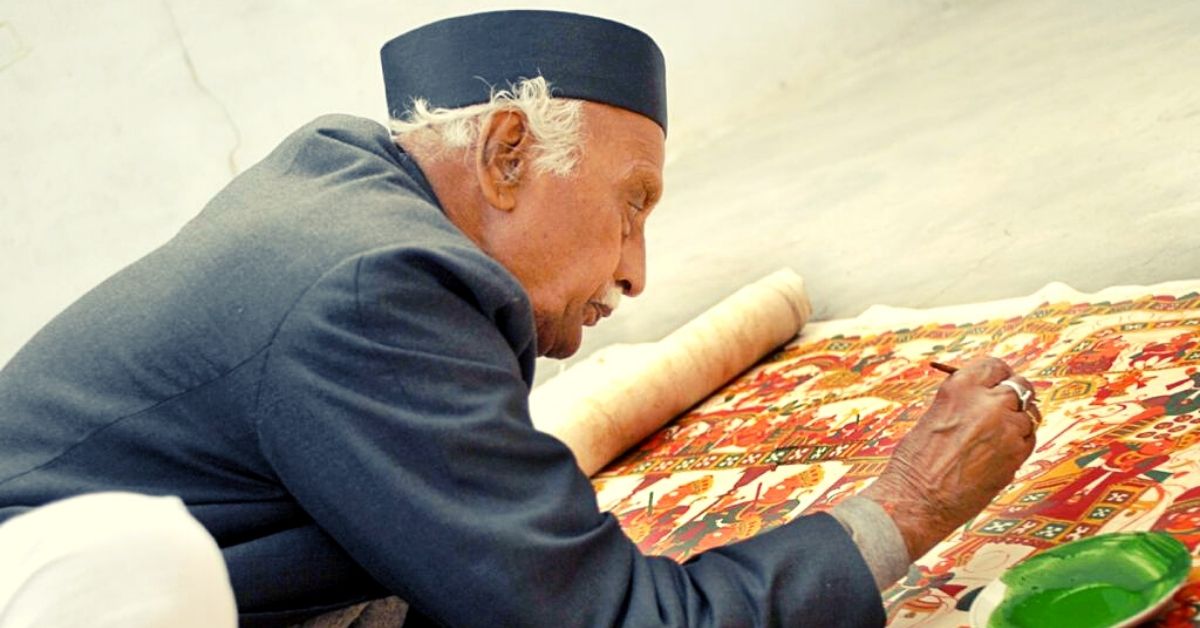
The artists use only natural colours made from stones, vegetables, flowers, spices and herbs. Generally, yellow is used for ornaments and clothing, green for nature, orange for limbs and blue for decor. Red is reserved for royal figures. Black colour is used to separate the colours with an outline which brings the painting alive.
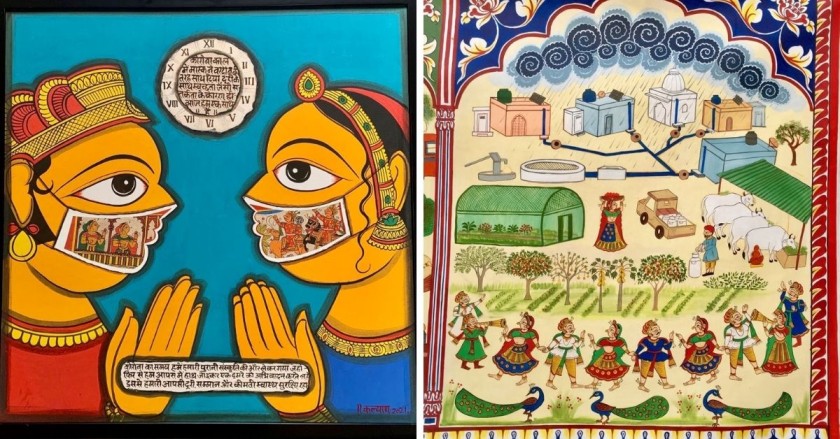
The last touch to the painting is given when it is commissioned, “We draw eyes in front of the Bhopa and Bhopi that mark the completion of the painting. Each scroll painting has the name of the artist and the date,” adds Kalyan.
Saving the Legacy
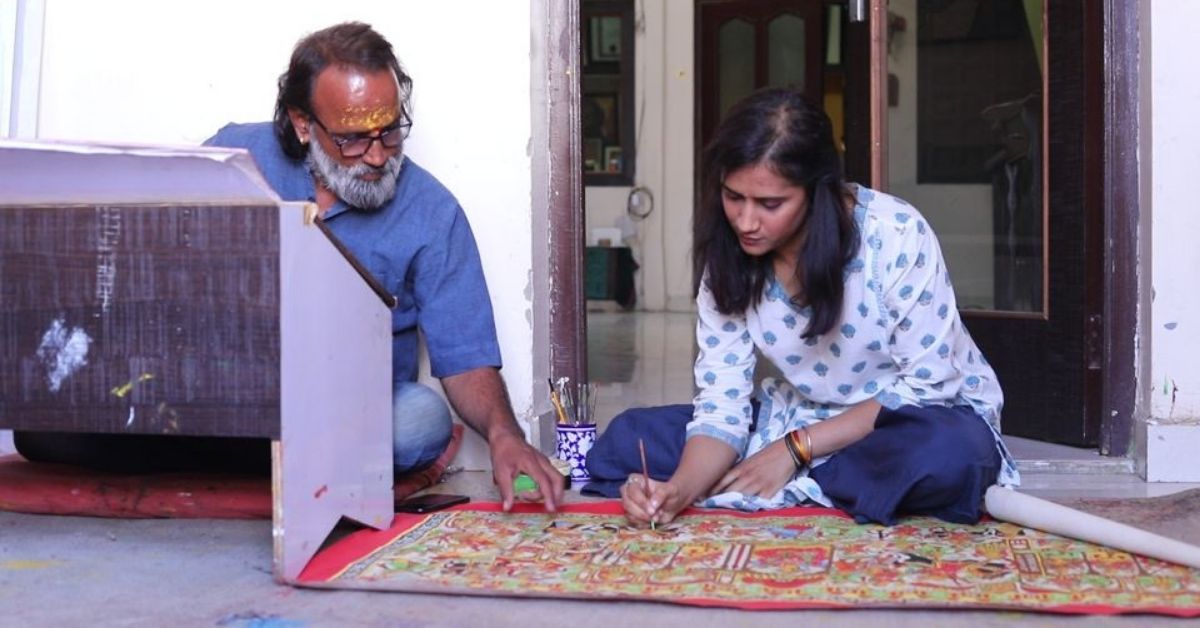
It was Lal Joshi who pioneered the contemporary art of Phad in the 1960s. As the world moved forward, people purchasing the paintings with deity themes reduced. So, he started depicting historic battles of Rajput and festivals like Holi and Diwali.
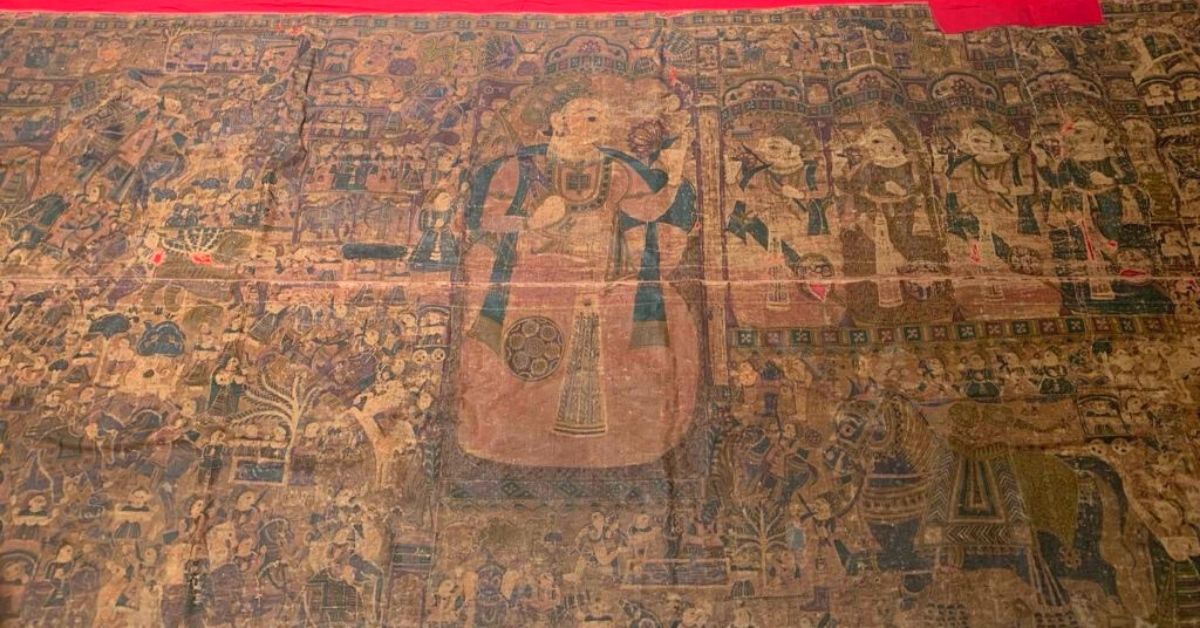
He also opened Chitrashala (art school) to spread the skills and techniques outside of his community.
Around the same time, he reduced the size of scrolls for a dealer in Russia and marked his international debut. Since then, he has travelled to 20 countries to showcase his artwork.

Kalyan and Gopal went one step further and introduced painting on mediums like home decor, textiles, furnishings and handicrafts through the students.
The Joshi family claims to have taught more than 5,000 people of which nearly 200 of them are pursuing Phad painting professionally. Renowned and award-winning artists like Pradip Mukherjee have learnt the Phad paintings from the Joshi clan.
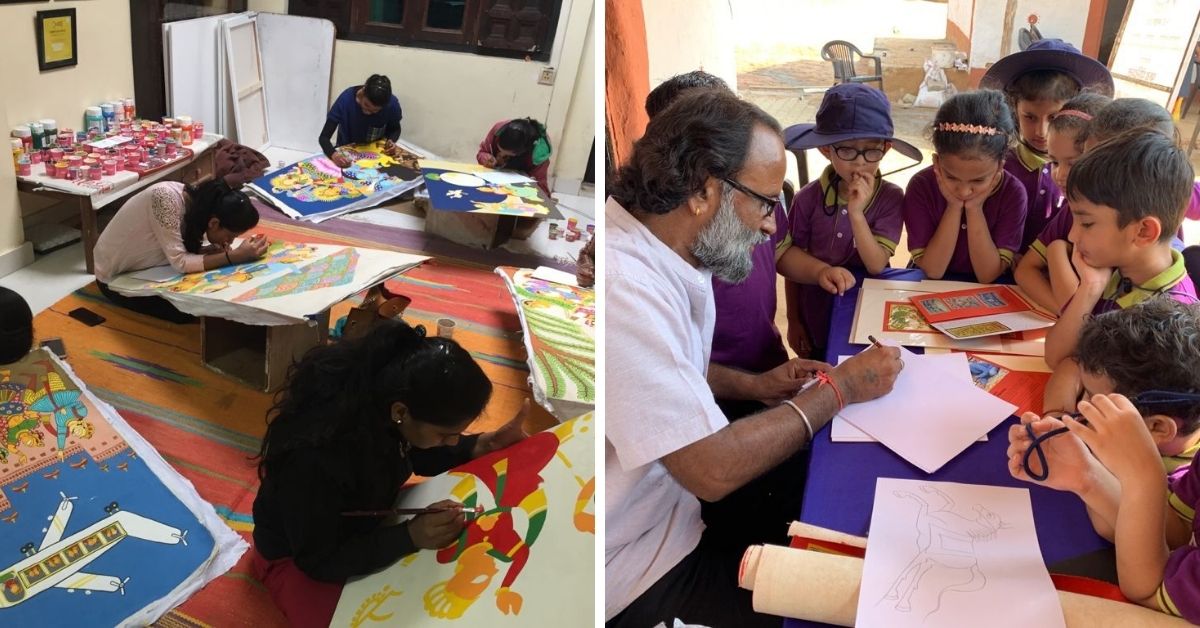
Apart from constantly innovating and modernising Phad paintings, Kalyan says that the government’s support is crucial in taking forward the legacy and making it economically viable.
“My painted Panchatantra series are part of school textbooks. A series on vaccination was recently purchased by the Bhilwara district administration. Thanks to such developments, the future of Phad looks hopeful and bright,” says Kalyan, whose children, nephews and nieces have entered the profession too.
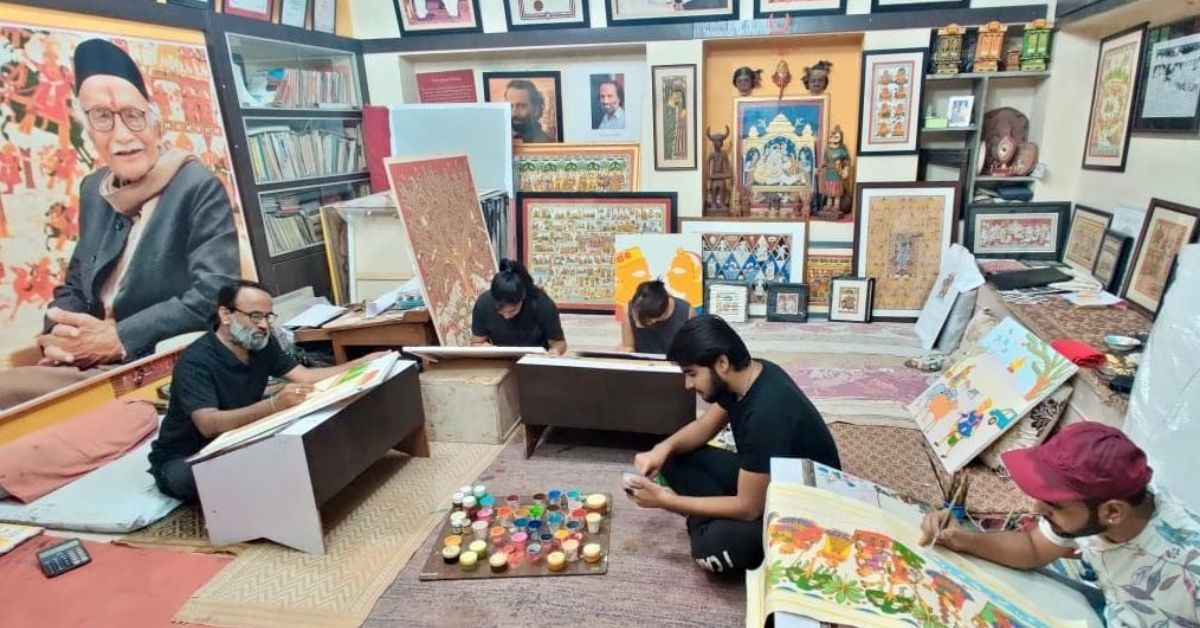
You can get in touch with Kalyan Joshi here.
Edited by Yoshita Rao
If you found our stories insightful, informative, or even just enjoyable, we invite you to consider making a voluntary payment to support the work we do at The Better India. Your contribution helps us continue producing quality content that educates, inspires, and drives positive change.
Choose one of the payment options below for your contribution-
By paying for the stories you value, you directly contribute to sustaining our efforts focused on making a difference in the world. Together, let’s ensure that impactful stories continue to be told and shared, enriching lives and communities alike.
Thank you for your support. Here are some frequently asked questions you might find helpful to know why you are contributing?


This story made me
- 97
- 121
- 89
- 167











